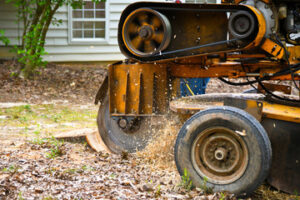Kitchen remodeling is a big project and requires a lot of time, but it can add value to your home. It also improves functionality and aesthetics. A modernized kitchen will appeal to future homeowners and increase your resale value.

Using the right keywords in your online content can help you attract qualified leads. You can use keywords like “kitchen remodel contractors” to capture local traffic and increase your search engine rankings. Keep reading the article below to learn more about Kitchen Remodeling Leads.
Kitchens are central hubs for gatherings and social interaction, but they also have an important role in a home’s overall value. Kitchen remodeling can boost a property’s appeal and utility while providing homeowners with a high return on investment. The National Association of Realtors reports that kitchen upgrades often yield the highest ROI, boosting a home’s sale price by more than the cost of the renovation.
For those considering a kitchen remodel, it’s important to choose a reputable contractor with a solid reputation and experience in the industry. The right contractor will have a wealth of design ideas and the skills to deliver quality results within budget. It’s also a good idea to consult with a real estate agent or a kitchen designer to learn about the latest kitchen trends that are most attractive to buyers.
Full kitchen remodeling offers a wide range of benefits that can increase a home’s resale value and improve the overall quality of life. Some of the most significant benefits include improved functionality, increased energy efficiency, enhanced style, and higher safety and accessibility. In addition, kitchen remodels can also qualify for tax credits and deductions based on the type of project and materials used.
A modernized kitchen can also provide a high-quality living space that is easy to maintain and suits a variety of lifestyles. This includes open layouts that seamlessly combine the kitchen with living spaces, large islands that create coveted gathering spots, and the use of durable, environmentally friendly materials.
Even for those who don’t plan to sell their homes anytime soon, a fully updated kitchen can enhance the quality of life and add value for years to come. Regardless of how you use your kitchen, it’s essential that it reflects your unique tastes and functional needs.
To attract more kitchen remodeling leads, consider implementing a referral program that incentivizes existing customers to recommend your services to their friends and family. This can help you grow your business without spending money on marketing or advertising. It’s also a great way to ensure that you’re only connecting with qualified prospects who have given you more information than just their name and phone number, such as by completing an estimate calculator on your website.
Updated Kitchens Make Your Home Feel Newer
Whether you’re looking to add a little pizazz or completely overhaul your kitchen, modernizing it can make your home feel brand-new. In fact, it’s one of the best ways to increase the resale value of your home. It’s also a great way to boost your mood – the perfect place for cooking, gathering, and spending quality time with family and friends.
Older kitchens often look outdated because of their dated materials and styles. It’s important to keep in mind that trends change over time, so a kitchen remodel is an opportunity to switch things up and update your kitchen for the next decade or two.
In addition to updating your kitchen, you may want to add more storage solutions. Adding new shelving units or walk-in pantries is an excellent way to keep your food organized and make it easier to find what you need when cooking.
Lifestyle Changes
Over the years, your family and your lifestyle can evolve and grow, making it necessary to upgrade certain aspects of your home to accommodate those changes. Whether you need more counter space for meal preparation, better storage solutions, or a different layout to fit your family’s needs, a kitchen remodel is the perfect way to meet those requirements.
Damage and Functionality Issues
Over time, your kitchen can experience damages or issues like poor ventilation that require a remodel. Additionally, it’s common to see wear and tear on countertops or appliances that need replacing. Adding durable surfaces and energy-efficient appliances will improve the longevity of your kitchen while saving you money on utilities and reducing environmental impact.
Enhanced Functionality
The main reason people remodel their kitchens is to improve the functionality of the room. A remodeled kitchen can help to reduce the amount of time and hassle it takes to prepare meals, cook, and clean. Upgrading your kitchen with state-of-the-art appliances, smart layouts, and customized cabinetry can make all of your favorite tasks easier and more enjoyable.
Aside from providing your clients with exceptional services, word of mouth is another powerful marketing tool for kitchen remodeling companies. Offer your customers referral incentives to encourage them to spread the word about their great experiences with you. You can offer a discount on your next project or give away free gifts like kitchen gadgets to reward their loyalty.
Kitchen Renovations Make Your Home More Energy Efficient
The kitchen is one of the largest consumers of energy in your home, so upgrading to energy-efficient appliances and lighting can dramatically reduce electricity bills. Water use can also be reduced by installing low-flow faucets and toilets, and tankless hot water systems that only heat water as needed. In addition to reducing energy costs, these resourceful upgrades can help protect the environment and promote healthy living for homeowners and their families.
Incorporating sustainable elements into a kitchen remodel can also be a great way to increase the value of a property. For example, choosing cabinets that utilize reclaimed wood or recycled glass is better for the planet and creates a unique look that buyers will want to pay a premium for. Other sustainable options include eco-friendly appliances, LED lighting, and water-saving fixtures. Incorporating a smart programmable thermostat can also be a great way to manage utility costs while protecting the environment.
Another great way to generate kitchen remodeling leads is by offering valuable content that helps potential customers make informed decisions about their projects. This could be in the form of informative articles, e-books, or design guides. Additionally, creating a social media presence and providing a blog can be great ways to attract attention and boost visibility.
Finally, by offering a referral program, you can incentivize existing customers to spread the word about your company and encourage new business. This can be a great way to reach more people, especially if the referrals are coming from friends and family who’ve had positive experiences with your company.
When it comes to home renovation services, the kitchen is a popular choice for many homeowners. It can improve a home’s overall value, increase its functionality, and add a stylish aesthetic to a space that’s used for cooking and entertaining. However, it’s important to choose a professional contractor with a track record of success and quality work. The right contractor can provide a high ROI on your investment and ensure that the results will be long-lasting. In addition, the right contractor can ensure that all renovations meet building codes and safety standards, which is critical to maintaining a home’s value.
Kitchen Renovations Increase Home Value
Kitchens are the heart of every home, serving as the central hub for meal prep, dining, socializing, and work. Consequently, prospective homeowners place a significant emphasis on the condition and design of a home’s kitchen during the buying process. A well-executed kitchen remodel can increase a home’s resale value and add significant value to the property.
According to Remodeling Magazine’s Cost vs Value Report, kitchen remodels are among the top projects that offer an outstanding return on investment. Typically, homeowners can recoup 60-80% of their investment when they sell their homes. The key to maximizing the ROI of a kitchen remodel is selecting high-quality materials and skilled workmanship for each upgrade.
In addition to providing an exceptional culinary experience, updated kitchens can make a positive impression on potential buyers and help homes sell more quickly. However, it’s important to understand that a kitchen renovation does not guarantee a higher resale value. The ROI of a kitchen remodel depends on the scope and cost of the project, as well as the location and demand for houses in the area.
To maximize the resale value of your kitchen, consider adding these updates to your renovation:
Cabinetry: Replacing outdated cabinet doors and drawer pulls with new modern hardware can give the room an instant facelift. Countertops: Choosing from a variety of luxurious materials like quartz or granite countertops can transform the kitchen and improve its overall aesthetic. Backsplashes: Vibrant backsplash tiles can enhance the kitchen’s style and create a focal point in the room. Appliances: Update older appliances with energy-efficient models that can save money on utility bills and improve the kitchen’s functionality.
One of the most effective ways to generate kitchen remodeling leads is through word-of-mouth marketing from satisfied customers. Encourage happy clients to leave positive reviews and feedback on your Google Business Listing, as well as social media channels. This customer-centric strategy demonstrates that your kitchen remodeling company cares about its reputation and values its customers’ experiences. Moreover, it will set you apart from competitors and build your brand’s credibility as an expert in kitchen renovations.



